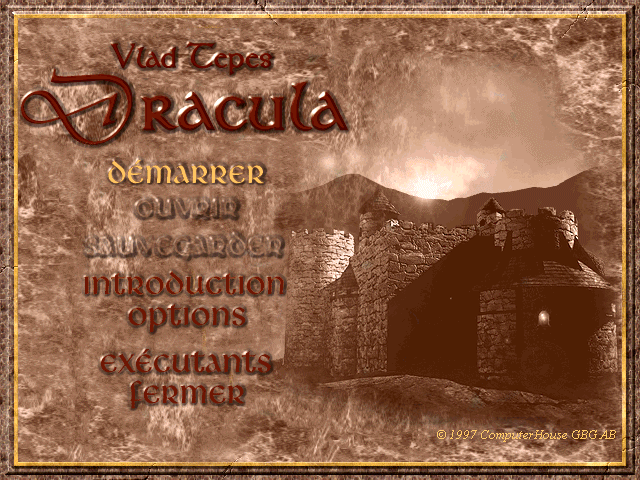Retro Replay Review
Gameplay
From the opening moments of Vlad Tepes Dracula, players dive into a deep micro-management kingdom simulator where every decision can mean the difference between victory and defeat. The core objective is straightforward: rebuild the shattered realm of Wallachia and reclaim territories lost to the Ottoman Turks. To achieve this, you’ll manage resources, recruit soldiers, and develop infrastructure across a dynamic campaign map.
Combat in Vlad Tepes Dracula unfolds in real time, emphasizing tactical positioning and unit synergy over sheer numbers. You’ll be issuing orders to infantry, archers, cavalry, and specialized freedom fighters—each with unique strengths and weaknesses. Skirmishes can escalate quickly, demanding quick reflexes and strategic foresight when enemy forces outnumber you or terrain favors the invaders.
Beyond the battlefield, kingdom administration challenges you to balance the economy, maintain morale, and expand your influence. Constructing farms, fortifications, and workshops is essential to sustain a growing army, yet overspending can leave you vulnerable to raids. Achieving the right mix of infrastructure upgrades and military investments becomes an engaging puzzle as the game progresses.
In later stages, optional side missions such as raiding supply caravans or forging alliances with neighboring nobles add depth and replayability. Though the campaign follows a linear path of recapturing forts and towns, the order and methods you choose can vary, encouraging experimentation with hit-and-run tactics, siege warfare, or defensive attrition strategies.
Graphics
Visually, Vlad Tepes Dracula opts for a classic isometric viewpoint reminiscent of strategy titles from the mid-90s, updated with richer textures and smoother animations. The rolling hills of Wallachia, dense forests, and fortified castles are rendered with period-appropriate details, immersing you in a gritty medieval landscape.
Unit models are well-defined despite the modest scale, allowing you to distinguish spearmen from crossbowmen on the field. When deployed in formation, soldiers move fluidly and respond promptly to commands, reducing frustration in fast-paced skirmishes. The UI, while densely packed with information, uses clear iconography and tooltips to aid both veterans and newcomers through each management screen.
Weather effects, such as rain or fog, occasionally impact visibility during critical encounters, adding atmospheric tension. Torchlit villages and campfires glow warmly when night falls, creating striking contrasts against shadowed forests. Though the color palette leans toward earthy tones, these variations help important locations and units stand out.
Cutscenes and in-engine cinematics introduce new objectives with dramatic flair, though they rely more on static artwork than full motion. This approach keeps file sizes reasonable without sacrificing narrative impact, ensuring smooth performance even on mid-range systems.
Story
Eschewing the supernatural trappings of Bram Stoker’s Dracula, the narrative centers on the historical figure Vlad III “the Impaler” as a fearless general defending his homeland. From the outset, you feel the urgency of a kingdom in turmoil, with villages razed and noble families scattered by Ottoman incursions. This gritty retelling grounds the conflict in realpolitik and medieval warfare.
Throughout the campaign, Vlad’s reputation grows as you liberate towns and rally peasants to your banner. Brief interludes between battles introduce key characters—such as loyal boyars, cunning advisors, and rival warlords—each offering optional quests that reveal motivations and hidden agendas. These vignettes enrich the world without bogging down the main thrust of reconquest.
Political intrigue weaves through the storyline as neighboring principalities weigh their allegiances. Decisions you make—whether to pardon a rebellious noble or tax a town heavily—carry tangible consequences in later missions. This branching dialogue system, while not overly complex, reinforces the theme that leadership in medieval Europe was as much about diplomacy as it was about brute force.
By the final chapters, the narrative crescendos in a multi-stage siege of a heavily fortified Ottoman stronghold. The tension of assembling diverse forces, coordinating simultaneous assaults, and anticipating enemy reinforcements culminates in one of the campaign’s most memorable sequences, delivering a satisfying conclusion to Vlad’s quest for vindication.
Overall Experience
Vlad Tepes Dracula offers a robust blend of kingdom building and real-time tactics, appealing to strategy fans who appreciate both macro-level resource management and micro-level battlefield command. The learning curve feels fair, with early missions doubling as tutorials and later scenarios challenging you to refine your approach. Newcomers to the genre will find themselves rewarded for patience and planning, while veterans can push limits with advanced tactics.
Performance is solid even on modest hardware, thanks to optimized graphics settings and a scalable interface. Multiplayer skirmishes aren’t included, which may disappoint some strategy buffs, but the single-player campaign’s depth and replay potential more than compensate for the absence of PvP modes. Optional difficulty settings ensure that both casual and hardcore players can tailor the experience to their preferences.
The game’s historical grounding elevates it above many generic medieval sims, offering an immersive window into 15th century Wallachia. While it doesn’t shy away from the brutality of the era, it balances grim moments with triumphant victories and the satisfaction of watching your domain flourish under Vlad’s banner.
For anyone seeking a strategy title that honors its historical roots while delivering engaging kingdom management and tactical combat, Vlad Tepes Dracula stands out as a compelling choice. Its rich scenario design and atmospheric presentation make it a must-try for fans of the genre.
 Retro Replay Retro Replay gaming reviews, news, emulation, geek stuff and more!
Retro Replay Retro Replay gaming reviews, news, emulation, geek stuff and more!









Reviews
There are no reviews yet.